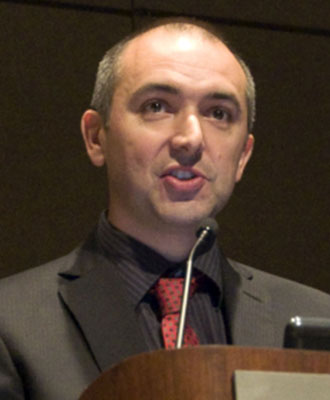Unless the capacity is exceeded, we will not respond to your email. Attendance is free, just bring along your lunch.
RSVP NOW for the next Microseismic User Group (MUG) event.
If you have any questions, please contact:
Paige Mamer, Paige.Mamer@tgs.com,
Johnny Wentzel, Johnny.Wentzel@esgsolutions.com
Abstract
Much has been written about novel ways to locate microseismic events from field data. While we eagerly look to more robust ways of locating events, it’s important not to overlook the first-order factors that affect microseismic event-location, regardless of the ingenuity of the localization method.
One of the fundamental concerns in the field of downhole-microseismic monitoring is knowing which way geophones are oriented in near-vertical observation wells. The most obvious method, sensing the earth’s magnetic field to find “north” does not work within ferrous wellbores. It is common practice to calibrate geophone orientations using seismic or microseismic observations. If we can locate a source coming from a known location, and account for the raypath, we can deduce our geophone orientation.
In this talk we’ll look into some of the practical methods of geophone orientation. We’ll review several field-methods for geophone calibration, including some novel ones (both on Earth, and the Moon). We’ll discuss the challenges posed by non-planar stratigraphy and the presence of VTI, and discuss how best to mitigate their effects on geophone orientation. Finally, we’ll share some practical considerations when planning microseismic projects so the resulting measurements are both useful and trustworthy.
Biography
Henry came to Halliburton after having run two microseismic and instrumentation consulting companies. Henry worked many years at the University of Calgary’s “Consortium for Research in Elastic Wave Exploration” (CREWES). While working there he performed a diverse range of research in the field of multicomponent seismology. Although Henry’s education is in Electrical Engineering, the bulk of his experience comes from 25 years of work in geophysics. Henry’s enthusiasm for new technologies has involved him in instrumentation design, seismic sensor testing, seismic processing, seismic acquisition, real-time monitoring and algorithm design. With Halliburton, Henry has developed new hardware and software to assist in microseismic data acquisition, processing and interpretation. He continues to develop new methodologies associated with DAS, DTS and interdisciplinary sensor-data amalgamation. Henry has works with Canadian, American and international clients to integrate fiberoptic technologies into operation-critical asset-monitoring solutions. Henry is active in the geophysical community and enjoys speaking at workshops and industry meetings. Outside of work hours, Henry plays tuba and trombone and volunteers to help run a community concert band.





